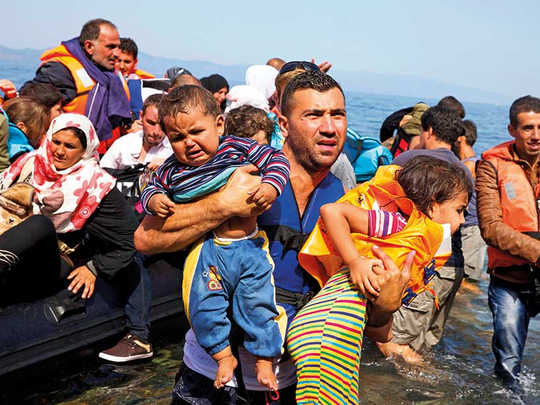
GENEVA: The number of people displaced from their homes across the world due to war and persecution climbed slightly to a record 65.6 million last year, with the escalating conflict in South Sudan largely accounting for the rise, the United Nations refugee agency said Monday.
The figure that includes refugees, asylum seekers and people uprooted inside their own countries was some 300,000 higher at the end of last year than at the end of 2015, the United Nations High Commissioner for Refugees said. That was a smaller increase than in the four previous years, prompting the UN agency to warn against complacency.
“Although these figures represent small shifts compared to the previous year … the relatively stable figures mask a very unstable situation,” agency chief Filippo Grandi said ahead of the official release of the report Monday. “This is becoming a forgotten crisis.”
Of the total, some 10.3 million people were newly displaced in 2016, around two-thirds fleeing within their own countries, according to an annual report by the group. The total refugee population — people who fled their home countries — was about 22.5 million people, and nearly half of those were children. In Germany, which vastly expanded its acceptance of people fleeing war from places like Syria, the number of refugees doubled to over 600,000 last year.
Syria’s six-year civil war remained the largest single cause of displacement, with 12 million people — around two-thirds of the population — either uprooted within the country or fleeing abroad, the group said.
They were followed by some 7.7 million Colombians, 4.7 million Afghans, 4.2 million Iraqis and 3.3 million South Sudanese.
Turkey, which has taken in the largest number of Syrians, to a total of 2.9 million at the end of 2015. It has since exceeded 3 million.
Syria is the only country in which a majority of the population is forcibly displaced. South Sudan, with a little over a quarter, has the next-biggest proportion — and fastest growing displaced population overall, the agency said. By the end of 2016, 3.3 million people from the world’s newest country had fled their homes, more than half to neighbouring countries.
“The international neglect that you see here is matched nowhere else in the world,” Grandi told AP on Sunday while visiting South Sudan’s largest internally displaced camp in the town of Bentiu. “Wherever you look there are dead ends.”
Thousands of South Sudanese now live in UN protected camps, including 80 per cent of Bentiu’s population.
The figures are based on the agency’s own data and on numbers reported by governments and non-governmental organisations.
Below are some facts from the UN refugee agency’s Global Trends Report published ahead of World Refugee Day on Tuesday
- — One in 113 people worldwide is displaced.
- — A record 65.6 million people were forcibly displaced at the end of 2016 — more than the population of Britain — and an increase of 300,000 over the previous year.
- — This included 22.5 million refugees, 40.3 million uprooted within their countries and 2.8 million asylum seekers.
- — One person became displaced every three seconds in 2016.
- — More than half of refugees globally come from three countries: Syria, Afghanistan and South Sudan.
- — The fastest growing refugee population was spurred by the crisis in South Sudan.
- — Nearly two-thirds of Syrians have been forced to flee their homes.
- — Developing regions host 84 per cent of the world’s refugees.
- — Lebanon cares for the largest number of refugees relative to its national population, with one in six people a refugee, followed by Jordan (one in 11) and Turkey (one in 28).
- - Turkey hosts the largest number of refugees (2.9 million) followed by Pakistan (1.4 million) and Lebanon (1 million).
- - Children under 18 make up just over half the refugee population.
- — There were two million new asylum claims in 2016. Germany received the highest number, followed by the United States, Italy and Turkey.
- — Unaccompanied or separated children — mainly Afghans and Syrians — lodged some 75,000 applications in 70 countries in 2016. But this is thought to be an underestimate as the data is incomplete.
- — Some 189,300 refugees were accepted for resettlement by 37 countries.
- — Some 552,200 refugees returned to their countries of origin — more than double the previous year. Most returned to Afghanistan.
- — At least 10 million people are estimated to be stateless.












